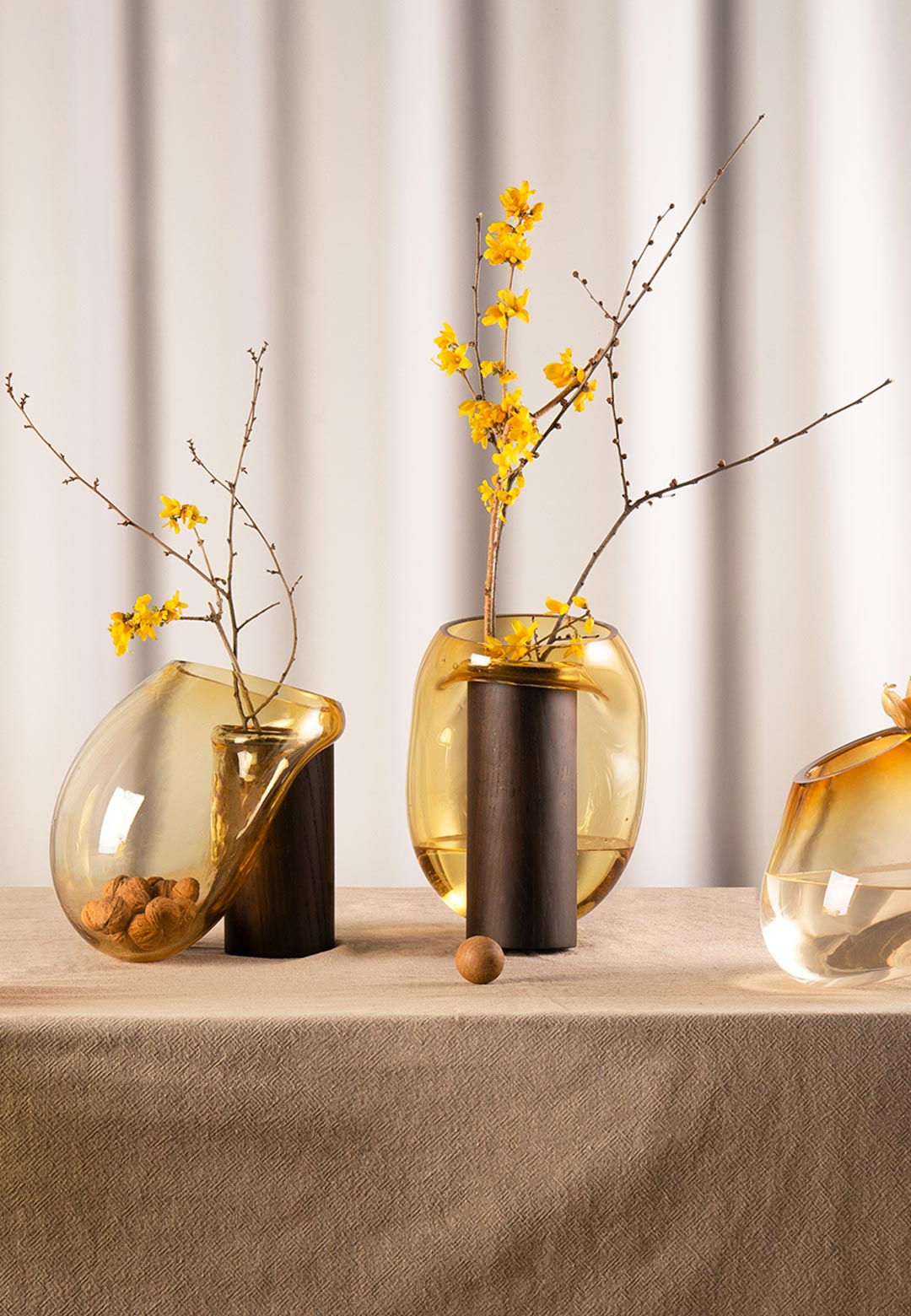The art of glassblowing is a tradition that goes beyond regional and cultural divisions, where this coveted skill has become an instrumental facet in local design traditions across the globe. Schools of glass blowing such as those originating from the commune of Murano near Venice, Italy, have successfully infused tradition into contemporary design innovation, pushing the field to greater heights than ever before. In a similar vein, the glass blowing traditions of Lviv in Ukraine have garnered their own degree of renown, the world over, with glass artists from the region having adapted the techniques refined by their ancestors, to produce works that seem at home in a more modern context.
Kateryna Sokolova is a Ukrainian product designer as well as the founder of Kyiv-based SOKOLOVA Design and co-founder of NOOM, a design company that operates within the domains of furniture design, lighting design, decor, and home accessories. At the recently concluded edition of the COLLECTIBLE design fair, held from March 9-12 in Brussels, Belgium, she debuted a series of blown glass vases for NOOM that hone in on Lviv’s heritage pertaining to this artform. The collection, titled Gutta, consists of a set of multifunctional glass vases that can be used for a range of purposes, using tradition to address the mounting demands for flexible product design in the market today.
Named after a particular form of glass blowing termed Guta, whose history is grounded in the time of the Kyivan Rus, from almost an entire millennium ago, the collection channels an organic design language to put its point across. While devising these pieces, Sokolova sought to honour these techniques, and explore the pliability of glass as a material. Fluid curved, drooping bulbous forms that tend to the convex, and a sculptural slant to the glass design serves to cement its ability to adapt to a wide array of spaces, functions, and aesthetic environments. When viewing the pieces, they almost resemble pieces of liquid crystal, frozen in time, but still radiating a sense of motion like glacial ice.
Sokolova notes in a statement, "The interplay between simplicity, pure lines, and materiality is the most important element of my work. I love to work with ‘live’ materials, challenging them and inscribing them into contemporary design from a new perspective. Through the vases' curvaceous forms, I wanted to convey the mysterious power of nature and a sense of rhythm. Every vase has been hand blown, which makes each one unique and beautiful in its imperfection."
As per Sokolova, the vases, which can fit into categories of both art and design, are fashioned by expert glassblowers from Lviv, whose skills have ingrained a sense of history into the decidedly modern vases. The collection itself features two types of vases. One version is equipped with a cylindrical wooden vessel that acts as a structural base, and displays an added dimension of functionality. This range of pieces has been christened Gutta Boon, with the addition to its name meaning 'a thing that is helpful or beneficial.'
Provision of this base element allows the vase’s convex form to rest on flat surfaces, where its neck projects into a ring-like form that both fits around the top of the cylinder and also doubles as a handle when the two components are separated. Hence, this piece can be used as a wine decanter, water carafe, fruit bowl, sweet dispenser, or as a storage container when required.
The second version of the product, not equipped with this cylindrical addition, is simply titled Gutta, and features even more of a sculptural slant to its design. Devoid of any sense of clear orientation, the piece has a base that is predominantly flat for the most part, until the very end of its taper, where its profile softly bends downwards. This is ideal for placement along the edges or corners of tables where the aesthetic effect, so produced, is nothing short of sublime. In this case, the materiality of the glass is somewhat reminiscent of its fluid, molten form, where the vase appears perched on the precipice between solid and liquid states—a quality that also extends to how it rests on any surface.
In Gutta, surrealist twists meet naturalistic flourishes, highlighting the supreme aesthetic quality and adaptability of glass as a material medium for sculpture. Each of the pieces can also be placed as freestanding glass sculptures when empty. Available in a selection of three colours, Gutta celebrates the immense artistic heritage and craftsmanship of Ukraine, reinterpreting it for the sensibilities of the modern age.






 Sign in with email
Sign in with email










What do you think?